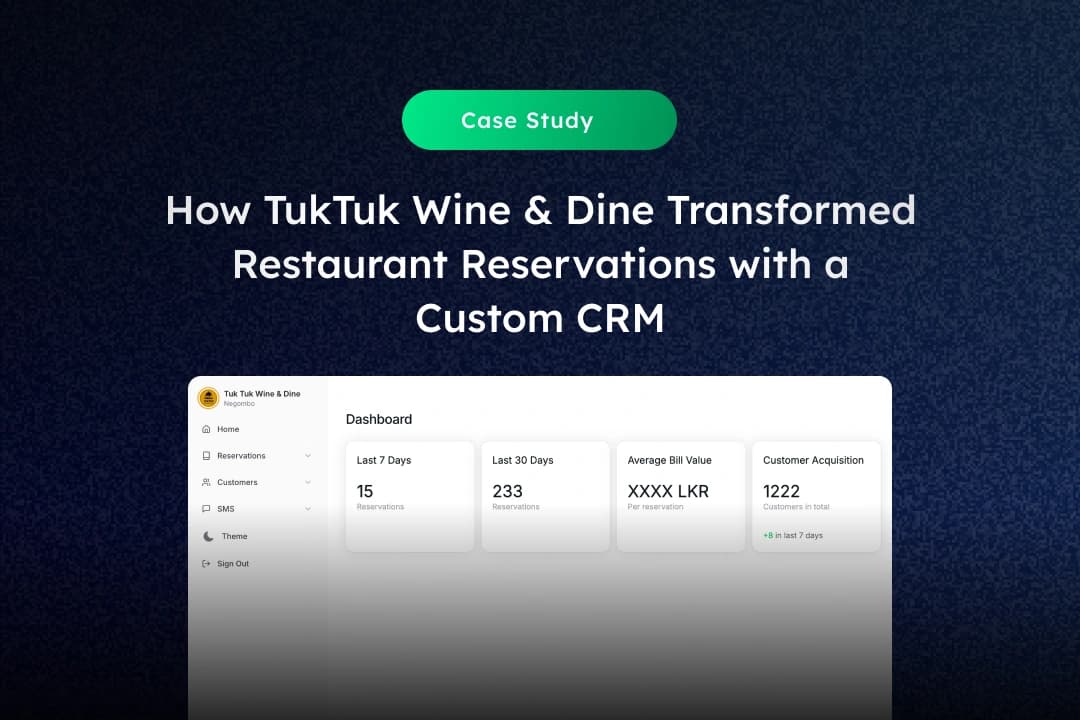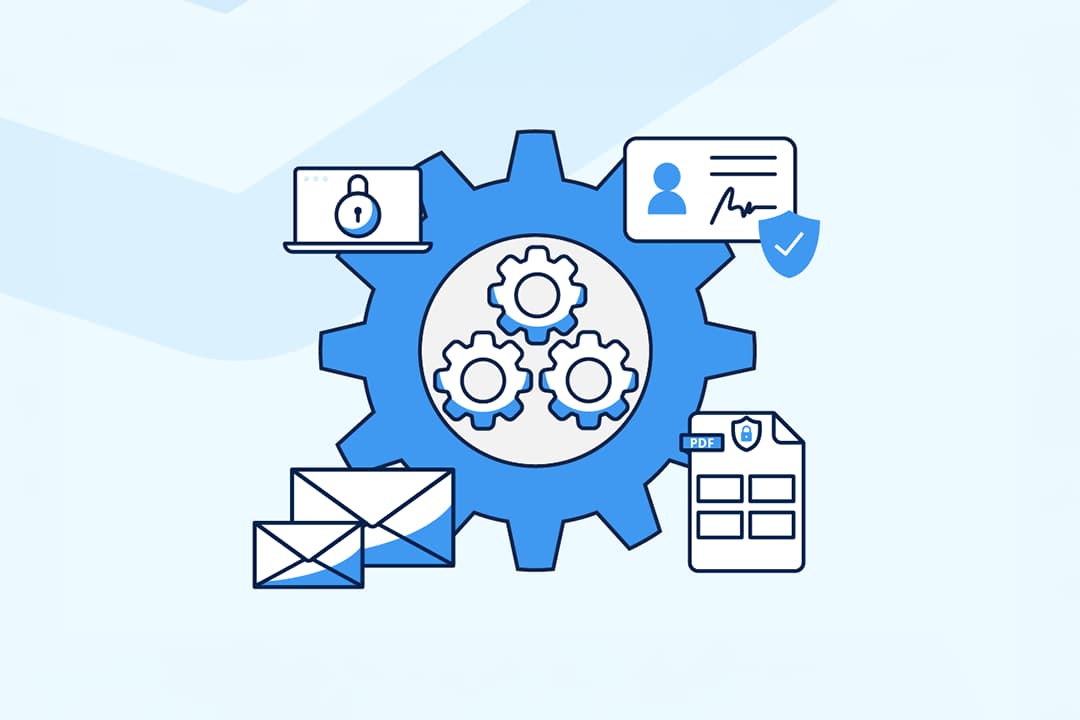
Introduction
The e-commerce landscape in Sri Lanka is experiencing unprecedented growth, with online retail sales expected to reach $2.5 billion by 2026. As consumer behavior shifts towards digital shopping, Sri Lankan retailers must adapt to stay competitive. This comprehensive guide explores how to build successful e-commerce platforms tailored for the Sri Lankan market, covering everything from platform selection to payment integration and local market considerations.
The E-commerce Opportunity in Sri Lanka
Market Growth and Trends
- Rapid Growth: E-commerce in Sri Lanka grew by 45% in 2024, outpacing regional averages
- Mobile Commerce: 78% of online purchases are made via mobile devices
- Consumer Adoption: 65% of urban Sri Lankans now shop online regularly
- Cross-border Trade: 35% of online purchases are from international retailers
Key Market Drivers
- Digital Payment Adoption: Increased use of mobile wallets and digital banking
- Improved Logistics: Better delivery networks across the island
- Social Commerce: Growing influence of social media on purchasing decisions
- Post-Pandemic Behavior: Permanent shift towards online shopping habits
Choosing the Right E-commerce Platform
1. Shopify Plus
Best For: Medium to large businesses with complex needs
Advantages:
- Comprehensive feature set
- Strong app ecosystem
- Excellent mobile optimization
- Built-in analytics and reporting
- Multi-language support (including Sinhala)
Sri Lankan Considerations:
- Integration with local payment gateways
- Support for local currency (LKR)
- Compliance with local regulations
- Local customer support availability
Pricing: $2,000+ per month
2. WooCommerce (WordPress)
Best For: Small to medium businesses with existing WordPress sites
Advantages:
- Cost-effective solution
- Full customization control
- Large plugin ecosystem
- SEO-friendly architecture
- Easy content management
Sri Lankan Considerations:
- Requires technical expertise for setup
- Need for reliable hosting in Sri Lanka
- Security considerations for self-hosted solution
- Regular maintenance and updates required
Pricing: $0 (plugin) + hosting costs
3. Magento Commerce
Best For: Large enterprises with complex requirements
Advantages:
- Highly scalable platform
- Advanced B2B features
- Strong multi-store capabilities
- Extensive customization options
- Enterprise-grade security
Sri Lankan Considerations:
- Higher implementation costs
- Requires dedicated technical team
- Complex setup and maintenance
- Need for specialized hosting
Pricing: $22,000+ per year
4. Custom E-commerce Development
Best For: Businesses with unique requirements
Advantages:
- Complete control over features
- Tailored to specific business needs
- Competitive differentiation
- Scalable architecture
- Integration with existing systems
Sri Lankan Considerations:
- Higher initial development costs
- Longer development timeline
- Need for ongoing maintenance
- Local development team advantages
Pricing: $15,000 - $100,000+ depending on complexity
Essential Features for Sri Lankan E-commerce Sites
1. Multi-language Support
Languages to Support:
- English (primary)
- Sinhala (local market)
- Tamil (regional market)
Implementation:
- Language switcher in header
- Translated product descriptions
- Localized checkout process
- Multi-language customer support
2. Local Payment Integration
Payment Methods to Include:
- Credit/Debit cards (Visa, Mastercard)
- Mobile wallets (FriMi, mCash, eZ Cash)
- Bank transfers
- Cash on delivery (COD)
- Buy now, pay later options
Technical Requirements:
- SSL certificate for security
- PCI DSS compliance
- Real-time payment processing
- Payment gateway integration
- Fraud detection systems
3. Shipping and Logistics
Delivery Options:
- Island-wide delivery
- Express delivery (Colombo and suburbs)
- Pickup points and lockers
- International shipping
- Free shipping thresholds
Integration Requirements:
- Real-time shipping calculations
- Delivery time estimates
- Tracking number generation
- Delivery confirmation
- Return and exchange management
4. Mobile Optimization
Mobile-First Design:
- Responsive design for all devices
- Touch-friendly interface
- Fast loading times
- Mobile payment optimization
- Progressive Web App (PWA) features
Performance Requirements:
- Page load speed under 3 seconds
- Optimized images and content
- Minimal data usage
- Offline browsing capabilities
- Push notifications
User Experience Design for Sri Lankan Market
1. Cultural Considerations
Design Elements:
- Color schemes that resonate locally
- Cultural imagery and icons
- Local festival and holiday themes
- Respectful cultural representation
- Accessibility for diverse users
User Interface:
- Intuitive navigation
- Clear product categorization
- Easy search functionality
- Wishlist and favorites
- Social sharing features
2. Local Shopping Behaviors
Shopping Patterns:
- Price comparison features
- Bulk purchase options
- Group buying capabilities
- Seasonal promotions
- Local brand preferences
Customer Expectations:
- Detailed product information
- High-quality product images
- Customer reviews and ratings
- Easy return policies
- Responsive customer service
Technical Implementation
1. Performance Optimization
Speed Optimization:
- Content Delivery Network (CDN)
- Image compression and optimization
- Caching strategies
- Database optimization
- Code minification
Mobile Performance:
- Accelerated Mobile Pages (AMP)
- Lazy loading for images
- Critical CSS inlining
- Service worker implementation
- Offline functionality
2. Security Implementation
Security Measures:
- SSL/TLS encryption
- Two-factor authentication
- Regular security audits
- DDoS protection
- Data encryption
Compliance Requirements:
- Personal Data Protection Act (PDPA) compliance
- PCI DSS for payment processing
- Regular security updates
- Data backup and recovery
- Privacy policy implementation
3. SEO Optimization
Technical SEO:
- Clean URL structure
- Meta tags optimization
- Schema markup implementation
- XML sitemap generation
- Robots.txt configuration
Content SEO:
- Keyword research for Sri Lankan market
- Local SEO optimization
- Product description optimization
- Blog content strategy
- Link building strategies
Payment Gateway Integration
Popular Payment Gateways in Sri Lanka
1. PayHere
- Local payment gateway
- Support for all major cards
- Mobile wallet integration
- Real-time processing
- Competitive transaction fees
2. FriMi
- Mobile wallet solution
- Growing user base
- Easy integration
- Low transaction costs
- Mobile-first approach
3. Commercial Bank Payment Gateway
- Bank-backed solution
- High security standards
- Local customer support
- Integration with banking systems
- Trusted by consumers
4. PayPal
- International payment option
- Global recognition
- Buyer protection
- Multi-currency support
- Easy integration
Integration Best Practices
Technical Implementation:
- Secure API integration
- Error handling and fallbacks
- Transaction logging
- Refund processing
- Payment confirmation
User Experience:
- Streamlined checkout process
- Multiple payment options
- Clear pricing display
- Security indicators
- Payment confirmation
Inventory Management
1. Stock Management
Features Required:
- Real-time inventory tracking
- Low stock alerts
- Automatic reordering
- Multi-location inventory
- Seasonal demand planning
Integration Options:
- ERP system integration
- Supplier management
- Purchase order automation
- Barcode scanning
- Inventory reporting
2. Product Management
Product Information:
- Detailed product descriptions
- High-quality images
- Product variants and options
- Pricing and discounts
- Stock availability
Content Management:
- Bulk product uploads
- Product categorization
- Search and filtering
- Product recommendations
- Content versioning
Marketing and Promotion Features
1. Digital Marketing Tools
Built-in Features:
- Email marketing integration
- Social media sharing
- Discount codes and coupons
- Loyalty programs
- Referral systems
Analytics and Tracking:
- Google Analytics integration
- Conversion tracking
- Customer behavior analysis
- A/B testing capabilities
- Performance reporting
2. Local Marketing Strategies
Sri Lankan Market Focus:
- Festival and holiday promotions
- Local influencer partnerships
- Community engagement
- Regional marketing campaigns
- Cultural event tie-ins
Customer Service Integration
1. Support Channels
Multi-channel Support:
- Live chat integration
- WhatsApp customer service
- Email support system
- Phone support
- Social media support
Automation Features:
- Chatbot implementation
- FAQ automation
- Ticket management
- Knowledge base
- Customer feedback system
2. Local Customer Service
Sri Lankan Considerations:
- Sinhala and Tamil language support
- Local business hours
- Cultural sensitivity training
- Local payment method support
- Regional delivery knowledge
Analytics and Reporting
1. Key Performance Indicators (KPIs)
Sales Metrics:
- Revenue and growth
- Average order value
- Conversion rates
- Customer lifetime value
- Cart abandonment rates
Operational Metrics:
- Website performance
- Mobile vs desktop usage
- Payment success rates
- Delivery performance
- Customer satisfaction
2. Business Intelligence
Reporting Features:
- Real-time dashboards
- Custom report generation
- Data export capabilities
- Trend analysis
- Predictive analytics
Launch Strategy and Go-to-Market
1. Pre-Launch Preparation
Testing Phase:
- User acceptance testing
- Performance testing
- Security testing
- Payment gateway testing
- Mobile device testing
Content Preparation:
- Product catalog setup
- High-quality images
- SEO-optimized descriptions
- Legal pages (terms, privacy)
- Customer service documentation
2. Launch Execution
Soft Launch:
- Limited product selection
- Invite-only access
- Feedback collection
- Bug fixes and improvements
- Performance monitoring
Full Launch:
- Complete product catalog
- Marketing campaign launch
- Customer acquisition
- Performance optimization
- Continuous improvement
Post-Launch Optimization
1. Performance Monitoring
Continuous Monitoring:
- Website uptime tracking
- Page load speed monitoring
- Conversion rate analysis
- Customer feedback collection
- Competitor analysis
Optimization Areas:
- User experience improvements
- Performance enhancements
- SEO optimization
- Conversion rate optimization
- Mobile experience refinement
2. Growth Strategies
Scaling Operations:
- Inventory expansion
- New product categories
- Geographic expansion
- International shipping
- B2B sales channels
Technology Upgrades:
- Advanced analytics
- AI-powered recommendations
- Automation implementation
- Integration expansion
- Security enhancements
Cost Considerations and ROI
1. Development Costs
Platform Costs:
- Platform licensing fees
- Development and customization
- Third-party integrations
- Design and UX work
- Testing and quality assurance
Ongoing Costs:
- Hosting and infrastructure
- Payment processing fees
- Maintenance and updates
- Marketing and advertising
- Customer support
2. ROI Calculation
Revenue Projections:
- Expected monthly sales
- Average order value
- Customer acquisition costs
- Customer lifetime value
- Growth projections
Break-even Analysis:
- Initial investment recovery
- Monthly operational costs
- Revenue targets
- Timeline to profitability
- Long-term growth potential
Common Challenges and Solutions
1. Technical Challenges
Performance Issues:
- Solution: CDN implementation and optimization
- Solution: Database optimization
- Solution: Caching strategies
Security Concerns:
- Solution: Regular security audits
- Solution: SSL implementation
- Solution: Payment security compliance
2. Business Challenges
Customer Acquisition:
- Solution: Digital marketing strategy
- Solution: SEO optimization
- Solution: Social media engagement
Competition:
- Solution: Unique value proposition
- Solution: Superior customer service
- Solution: Competitive pricing strategy
Future Trends and Opportunities
1. Emerging Technologies
AI and Machine Learning:
- Personalized product recommendations
- Chatbot customer service
- Predictive analytics
- Dynamic pricing
- Fraud detection
Augmented Reality:
- Virtual product try-ons
- 3D product visualization
- Interactive shopping experiences
- Virtual showrooms
- Enhanced product demonstrations
2. Market Evolution
Social Commerce:
- Instagram and Facebook shopping
- Influencer partnerships
- User-generated content
- Social proof integration
- Community-driven sales
Voice Commerce:
- Voice search optimization
- Smart speaker integration
- Voice-activated ordering
- Conversational commerce
- Hands-free shopping
Conclusion
Building a successful e-commerce platform for the Sri Lankan market requires careful consideration of local preferences, technical requirements, and business objectives. By choosing the right platform, implementing essential features, and focusing on user experience, Sri Lankan retailers can create compelling online stores that drive sales and customer satisfaction.
Key success factors include:
- Local Market Understanding: Adapting to Sri Lankan consumer behavior and preferences
- Technical Excellence: Ensuring fast, secure, and mobile-optimized experiences
- Payment Integration: Supporting local payment methods and preferences
- Customer Service: Providing culturally appropriate and multilingual support
- Continuous Optimization: Regular monitoring and improvement based on data and feedback
The e-commerce opportunity in Sri Lanka is significant and growing. With the right strategy and implementation, retailers can establish strong online presence, reach new customers, and build sustainable digital businesses that thrive in the competitive marketplace.
Ready to build your e-commerce platform? Contact us to discuss how we can help you create a successful online store tailored for the Sri Lankan market.



